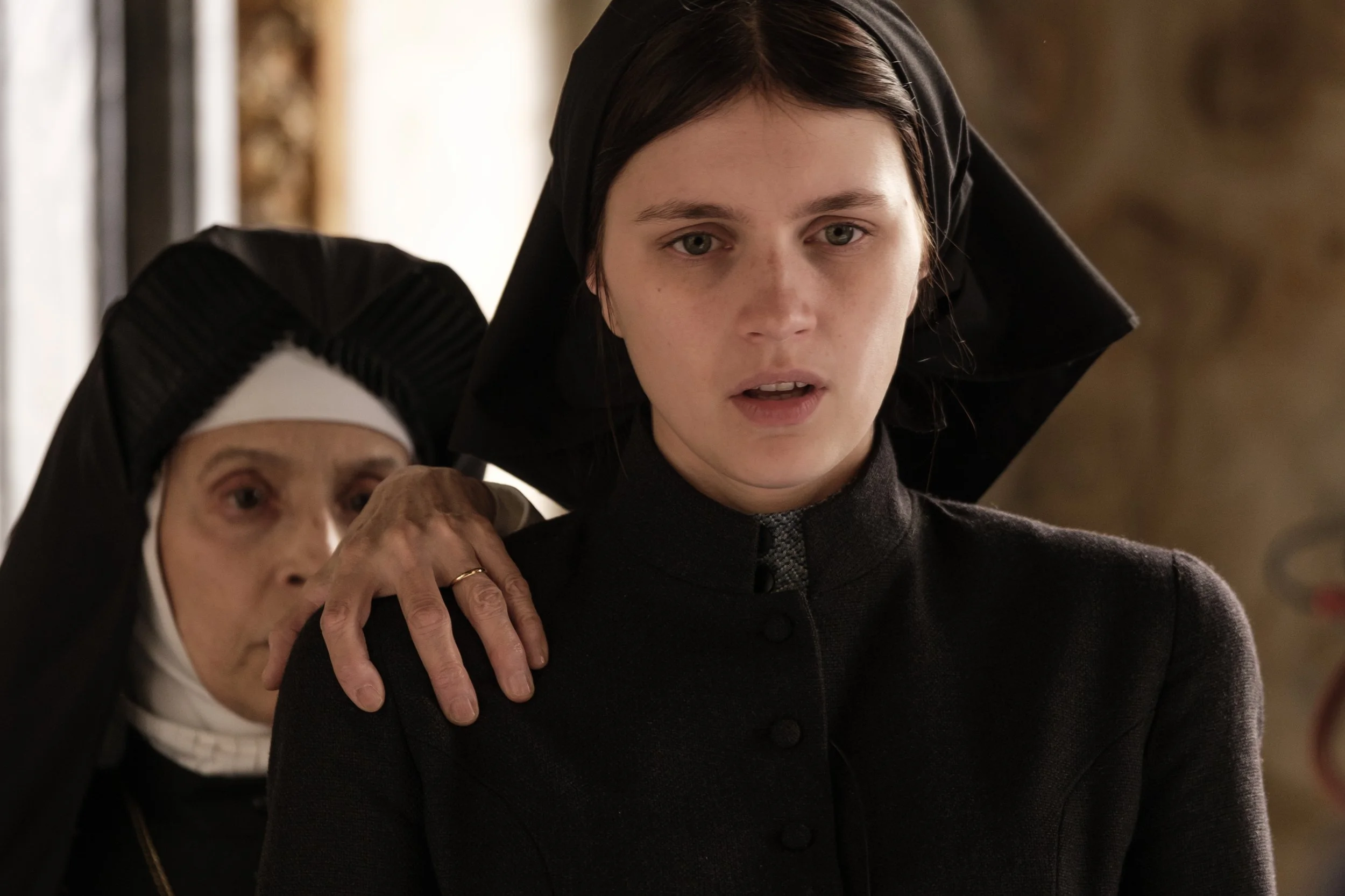Review: 'The Beast" is a beautiful, if sometimes obtuse, examination at love and fear across lifetimes
Technology meets reincarnation meets predestination in “The Beast,” a strange and oddly seductive dive into eccentric science fiction from French writer-director Bertrand Bonello.
The movie introduces us to Gabrielle Monnier (played by the great French actor Léa Seydoux), who in 2044 is exploring the possibility of having her DNA “purified” — a process that will, she’s told, allow her to live without feeling intense emotions, which in the future are considered a danger to society. Outside the lab, she runs into a man, Louis Lewanski (George MacKay, from “1917”), who’s contemplating the same procedure.
There’s a connection between Gabrielle and Louis, and soon the movie shows us what it is. They met in a past life, in 1910 — where Gabrielle was a pianist married to an industrialist (Martin Scali), but finding herself attracted to a visiting Londoner, Louis. And they met again in 2014, when Gabrielle was a struggling actress housesitting in L.A. and Louis is a sad loser recording videos about his virginal existence, which he blames on all the blonde women around him — including Gabrielle.
The common factor — and this comes from Henry James’ 1903 novella “The Beast in the Jungle,” which Bonello and co-writers Guillaume Bréaud and Benjamin Charbit loosely adapt — is how Gabrielle, in every era, becomes paralyzed by fear and unable to act in moments of crisis. Gabrielle tries to tackle her anxieties in 2044, confiding in a comfort android, Kelly (played by Guslagie Malanda, who brilliantly played the defendant in “Saint Omer”). And, in a couple of timelines, she meets a psychic (played by Elina Löwensohn, from “Schindler’s List”) whose predictions are both oblique and to the point.
The same might be said of Bonello’s approach to the story, which handles its time jumps with deliberation, but otherwise sets its own strange rhythm as Gabrielle and Louis encounter each other not only in 1910 and 2014 but in several different years recaptured in a retro nightclub in 2024.
Seydoux is always alluring, but her attempt to unravel Gabrielle’s many lives brings out new layers of her repertoire. She’s nicely matched with MacKay (a late replacement for Bonello’s frequent collaborator Gaspard Ulliel, who died in a skiing accident before filming started), an actor whose babyface features hide a depth of intense feeling.
“The Beast” will not work for every viewer — the narrative is dense enough that there were moments where I’m still not sure what was happening. But I was fascinated to watch Bonello, Seydoux and MacKay trying to work it all out.
——
‘The Beast’
★★★1/2
Opens Friday, April 19, at the Broadway Centre Cinemas (Salt Lake City). Not rated, but probably R for violent images and some sexual content. Running time: 146 minutes; in English and French with subtitles.







